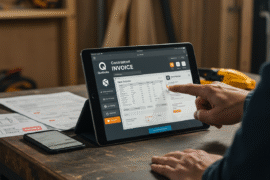This article may contain references to products or services from one or more of our advertisers or partners. We may receive compensation when you click on links to those products or services. Nonetheless, our opinions are our own.
The information presented in this article is accurate to the best of our knowledge at the time of publication. However, information is subject to change, and no guarantees are made about the continued accuracy or completeness of this content after its publication date.
- Highlights
- Why Early Education Investing Matters
- Top Investment Accounts for Education
- How to Open an Investment Account for Minors
- Tax Benefits to Maximize
- Tips to Stay on Track
- Teaching Children Financial Responsibility Along the Way
- Investing for Your Child’s Experiences
- Final Thoughts
- Frequently Asked Questions
- Recommended Reads
Highlights
Preparing for a child’s future often starts with education. Rising tuition costs make early investment not only helpful but necessary. By starting early, parents can build a strong foundation for their child’s academic journey, whether for college, private schooling, or alternative education paths. This column explains how to choose the right savings options and remain consistent for long-term success.
Why Early Education Investing Matters
Compounding Gains and Long-Term Growth
Starting early allows your money to grow through compound interest. Even modest contributions, when made consistently over time, can yield significant results. Beyond growth, these accounts often include tax advantages that enhance your savings. Benefits of Starting Early:
- Lower Debt: Reduces future reliance on student loans.
- More Choices: Enables flexibility, whether attending a prestigious university or trade school.
- Less Stress: Consistent savings ease financial pressure during education phases.
Top Investment Accounts for Education
529 College Savings Plan
- Use: Tuition for college and eligible K–12 education.
- Tax Benefits: Grows tax-free and withdrawals are tax-exempt for qualified expenses.
- Contribution Limits: No federal annual cap, but most state lifetime limits exceed $300,000.
Coverdell Education Savings Account (ESA)
- Use: Suitable for K–12 and college expenses.
- Tax Benefits: Tax-free growth and tax-exempt withdrawals for qualified education.
- Contribution Limits: $2,000 annually per beneficiary, subject to income thresholds.
Custodial Account (UGMA/UTMA)
- Use: Broad usage, including education.
- Tax Impact: First $1,150 in unearned income is tax-free; amounts beyond that may be taxed.
- Contribution Limits: No cap, but contributions over $18,000 (2025) may trigger gift taxes.
Roth IRA for Kids
- Purpose: Primarily for retirement but can support qualified education expenses.
- Tax Benefits: Tax-free withdrawals of contributions; earnings can also be used for education without penalties.
- Contribution Limits: Up to the child’s earned income or $7,000 (2025), whichever is lower.
Account Comparison Table
| Account Type | Tax Benefits | Education Use | Contribution Limits |
|---|---|---|---|
| 529 Plan | Tax-free growth and withdrawals | Yes | No annual cap (lifetime limits vary) |
| Coverdell ESA | Tax-free growth and withdrawals | Yes (K–12 + college) | $2,000/year per child |
| Custodial Account | First $1,150 income tax-free | Yes | No cap; gift tax over $18,000/year |
| Roth IRA for Kids | Tax-free growth, tax-free contributions | Yes (qualified expenses) | Up to child’s earned income or $7,000 |
How to Open an Investment Account for Minors
How Much Should You Invest?
There’s no fixed starting amount. Choose a level that fits your budget and scale it as your financial situation improves. Savings Growth Example:
- $100/month from birth to age 18 with 6% return: approximately $38,000
- $200/month with the same conditions: approximately $77,000
Consistency is more impactful than the contribution amount. Steady investing builds significant growth over time.
Voted "Best Overall Budgeting App" by Forbes and WSJ
Monarch Money helps you budget, track spending, set goals, and plan your financial future—all in one app.
Get 50% OFF your first year with code MONARCHVIP
Tax Benefits to Maximize
Optimize Your Education Savings with Tax Perks
Using tax-advantaged accounts can significantly enhance your savings potential.
- 529 Plans: Federal tax-free withdrawals; possible state tax deductions.
- Coverdell ESA: Tax-free growth if used for eligible school costs.
- Roth IRA: Withdrawals of contributions are tax-free anytime; earnings used for education avoid penalties.
- Custodial Accounts: First $1,150 of unearned income is tax-free, with favorable tax treatment on the next $1,150.
These options reduce tax liability and increase available education funds.
Tips to Stay on Track
- Automate Contributions: Set up recurring transfers to maintain momentum effortlessly.
- Get Family Support: Encourage relatives to contribute, especially for events like birthdays.
- Review Annually: Adjust based on changes in income, goals, or educational outlook.
- Work With a Professional: A financial advisor ensures efficient saving and tax strategies.
Teaching Children Financial Responsibility Along the Way
Involving children in the savings journey nurtures good financial habits and accountability. Engaging Activities:
- Talk through the difference between wants and needs.
- Create a visual savings tracker together.
- Use games like Monopoly to teach spending and saving.
- Allocate part of the gift money to their education fund.
Investing for Your Child’s Experiences
Investing isn’t only about school tuition. It supports enrichment activities and life experiences, summer camps, music lessons, or study abroad opportunities. These contributions help shape well-rounded individuals ready for adulthood.
Final Thoughts
Investing in your child’s education sets them up for more than just academic success, it offers financial confidence and freedom of choice. When you start early and commit to a consistent, informed strategy, your child benefits for years to come. Whether you’re contributing a little or a lot, staying consistent and choosing the right account can turn modest savings into meaningful opportunities.
Frequently Asked Questions
Why should I invest in my child’s education?
It lowers future debt, broadens learning opportunities, and relieves long-term financial stress.
When should I start investing?
As early as possible, ideally at birth. Time enables growth through compounding.
What if I can’t invest much?
Begin with what you can. Even small amounts, $25 to $50 monthly, add up over time. Many platforms allow low or fractional contributions.

Reviewed and edited by Albert Fang.
See a typo or want to suggest an edit/revision to the content? Use the contact us form to provide feedback.
At FangWallet, we value editorial integrity and open collaboration in curating quality content for readers to enjoy. Much appreciated for the assist.
Did you like our article and find it insightful? We encourage sharing the article link with family and friends to benefit as well - better yet, sharing on social media. Thank you for the support! 🍉
Article Title: Smart Ways for New Parents to Save for Their Child’s Education
https://fangwallet.com/2025/05/24/save-for-childs-education/The FangWallet Promise
FangWallet is an editorially independent resource - founded on breaking down challenging financial concepts for anyone to understand since 2014. While we adhere to editorial integrity, note that this post may contain references to products from our partners.
The FangWallet promise is always to have your best interest in mind and be transparent and honest about the financial picture.
Become an Insider

Subscribe to get a free daily budget planner printable to help get your money on track!
Make passive money the right way. No spam.
Editorial Disclaimer: The editorial content on this page is not provided by any of the companies mentioned. The opinions expressed here are the author's alone.
The content of this website is for informational purposes only and does not represent investment advice, or an offer or solicitation to buy or sell any security, investment, or product. Investors are encouraged to do their own due diligence, and, if necessary, consult professional advising before making any investment decisions. Investing involves a high degree of risk, and financial losses may occur including the potential loss of principal.
Source Citation References:
+ Inspo
There are no additional citations or references to note for this article at this time.












































